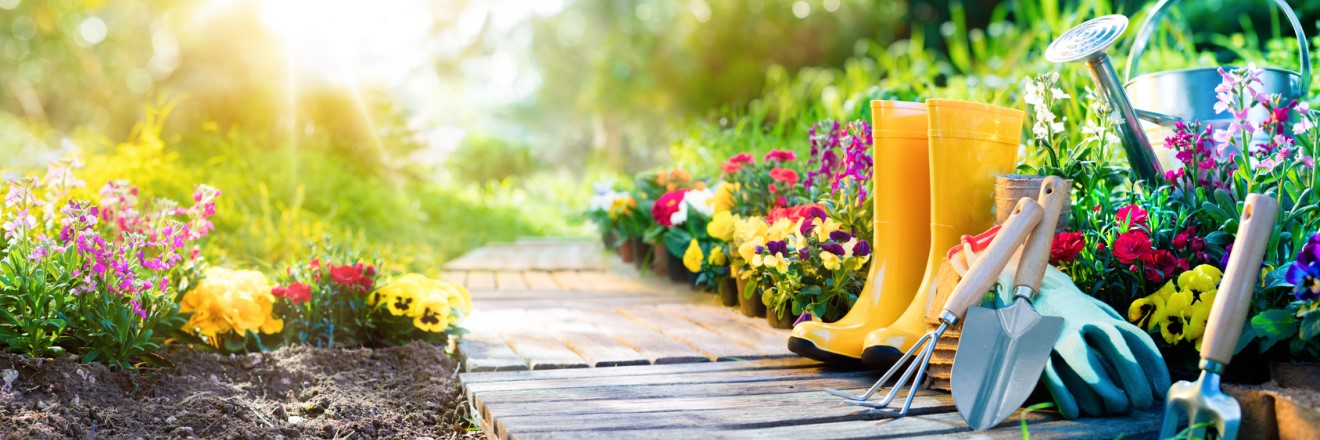
The newest addition to the Tim Wallace Soil Mix Supply amendment offerings – straight out of the Peat fields of Minnesota, is Peat. It can be purchased as a standalone amendment, or blended into one of the these new Mixes –
- Peat as an amendment (sold by the cubic yard)
- Peat Garden Mix
- Peat Topdressing
- Peat Raised Bed Mix
- Peat Lawn Repair Mix
- PRO-SERIES with Peat
Peat is not commonly used as a standalone product. In fact, by itself it’s not a good growing medium beyond starting seeds from scratch. Even though peat can help your soil retain nutrients, it hardly contains any nutrients at all in and of itself. Peat also doesn’t add sufficient nutrients to the soil for healthy plant growth on its own so you have to add other organic components like topsoil along with it.
As a Soil Amendment
• 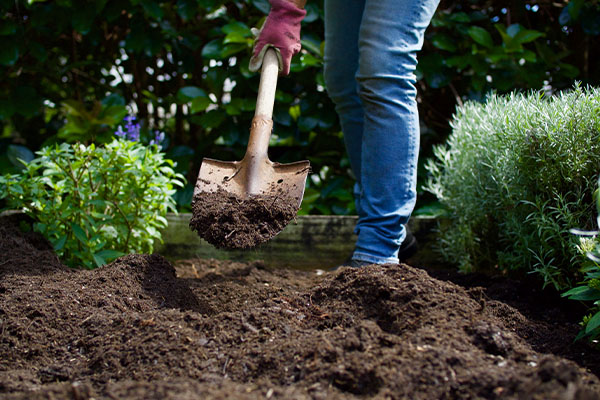 Water Retention: One of the significant attributes of peat is its ability to retain water. Its fibrous structure creates pore spaces within the soil, enhancing water retention and preventing rapid moisture loss. This quality proves particularly useful in soils that tend to dry out quickly – like clay.
Water Retention: One of the significant attributes of peat is its ability to retain water. Its fibrous structure creates pore spaces within the soil, enhancing water retention and preventing rapid moisture loss. This quality proves particularly useful in soils that tend to dry out quickly – like clay.
• Organic Soil Amendment: Peat serves as an excellent organic amendment, enriching the soil with organic matter as it decomposes further over time. This enrichment fosters a favorable environment for beneficial microorganisms that contribute to soil health. Peat can be added to your soil to achieve any of the following results:
- Help drier, sandier soils retain moisture for longer.
- Help heavy clay soils loosen up and have better aeration and drainage.
- Its fibrous nature facilitates better soil drainage and root development.
- Increase the amount of organic material in the soil, which breaks down over time to provide nutrients.
Gardening and lawn experts seem to unanimously agree, that peat used in a ratio of no more than 3 to 1 is the best soil blend combination. We prefer a slightly more conservative approach and blend our soil mixes made with peat at a rate of 25% peat. This percentage amount provides the moisture and nutrient retention qualities of the peat that complement and improve the other organics used in the blend while not making drastic changes to the soil’s pH.
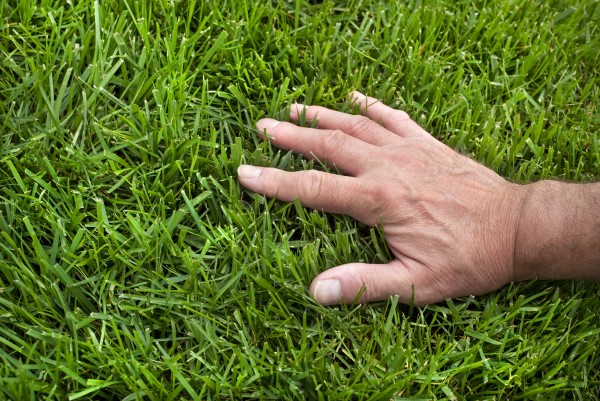 FOR THE LAWN
FOR THE LAWN
- Peat Topdressing: 75% Peat, 25% fine sand
- Peat Lawn Repair Mix: 50% topsoil, 25% fine sand, 25% peat
- PRO-SERIES with Peat: 50% topsoil, 25% fine sand, 25% peat, 80lbs. PennMulch
Peat is often added to soil to lighten, aerate, and help retain moisture. Although peat is good for keeping in moisture and aerating the soil, peat alone is not often used for lawns since its low pH / acidity hinders grass growth and can kill earthworms. This is one reason why we suggest introducing peat into the lawn as a component of a soil blend.
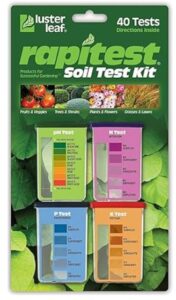 If you’re considering using peat on your lawn, we recommend that you do a pH test of your soil before and after to measure results. (Soil test kits are sold at many home-improvement garden centers and often can be done for you through your state or county agriculture extension.) Ideal pH for both lawns and vegetable gardens should be between 6.5-7.0 – slightly acidic.
If you’re considering using peat on your lawn, we recommend that you do a pH test of your soil before and after to measure results. (Soil test kits are sold at many home-improvement garden centers and often can be done for you through your state or county agriculture extension.) Ideal pH for both lawns and vegetable gardens should be between 6.5-7.0 – slightly acidic.
Traditionally, elemental Sulphur was added to lower the pH of a lawn. Lime was conversely used to raise the pH. For those who wish to avoid these chemical applications – especially in the garden, peat is the perfect choice. Since here in the Midwest most native soils tend to be neutral to slightly alkaline – (pH of 7.0 and above) adding peat to the lawn (or garden) when used in a quality soil blend can improve the soil while gently lowering the pH to within the optimal range. If your soil tests within the 6.0-6.9 range (or lower), consider a soil blend that uses compost rather than peat so you do not reduce your soil’s pH into a much too acidic state.
Peat offers a range of benefits in lawn care. This versatile component plays a pivotal role in maintaining soil balance thanks to its ability to regulate pH levels, retain essential moisture and supply vital nutrients. Its weed-suppressing properties are equally crucial, as it forms a dense topsoil layer that ensures your grass can flourish without having to compete with unwanted intruders. Whether you’re contending with clay-heavy soils or sandy landscapes, peat comes to the rescue by enhancing drainage in the former and facilitating aeration in the latter. In summary, incorporating peat is a wise decision for bolstering the vitality of your grass. If your ultimate goal is to achieve a lasting, vibrant lawn, peat can create an ideal environment for your plants to flourish, all while curbing weed growth and improving soil drainage – a winning recipe for lush and enduring greenery.
 One of peat’s fundamental roles is as a key component in top dressing for grass and lawns. Its lightweight and airy characteristics make it a great choice, especially during hot and dry summers, as it excels at retaining moisture in the soil, providing vital protection against wilting in the scorching sun. It proves particularly advantageous in sandy soils where moisture retention is needed. This organic material can be applied in late fall, once your lawn is cleared of leaves and other debris, or, in early spring while the grass is just beginning to green up. What’s more, the light and fluffy texture of peat simplifies the establishment of grass seedlings, making it a valuable addition to your lawn maintenance routine. When applied as a top dressing either without or after seeding, peat contributes to a healthy and thriving lawn, ensuring that your outdoor space remains lush and vibrant throughout the seasons.
One of peat’s fundamental roles is as a key component in top dressing for grass and lawns. Its lightweight and airy characteristics make it a great choice, especially during hot and dry summers, as it excels at retaining moisture in the soil, providing vital protection against wilting in the scorching sun. It proves particularly advantageous in sandy soils where moisture retention is needed. This organic material can be applied in late fall, once your lawn is cleared of leaves and other debris, or, in early spring while the grass is just beginning to green up. What’s more, the light and fluffy texture of peat simplifies the establishment of grass seedlings, making it a valuable addition to your lawn maintenance routine. When applied as a top dressing either without or after seeding, peat contributes to a healthy and thriving lawn, ensuring that your outdoor space remains lush and vibrant throughout the seasons.
FOR THE GARDEN
- Peat Garden Mix: 50% topsoil, 25% fine sand, 25% peat
- Peat Raised Bed Mix: 50% topsoil, 25% coarse sand, 25% peat
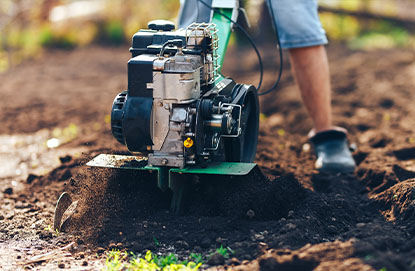 For the garden, peat can be tilled into a planting bed where the soil is not sufficiently friable. Friable soil contains the proportions of dirt, silt and sand (the constituents of soil) that result in an ideal crumbly texture. By not being too heavy (in other words, holds lots of water) and not too light (holds little water), friable soil provides the best soil for water, nutrient and organic matter retention. This is what we are looking for in our gardens so we can get the best from our plants. Peat will also lighten up the soil in your garden, which may have become compacted over the years, resulting in inadequate drainage.
For the garden, peat can be tilled into a planting bed where the soil is not sufficiently friable. Friable soil contains the proportions of dirt, silt and sand (the constituents of soil) that result in an ideal crumbly texture. By not being too heavy (in other words, holds lots of water) and not too light (holds little water), friable soil provides the best soil for water, nutrient and organic matter retention. This is what we are looking for in our gardens so we can get the best from our plants. Peat will also lighten up the soil in your garden, which may have become compacted over the years, resulting in inadequate drainage.
Peat offers a range of benefits when incorporated into your gardening practices as a soil amendment. Its ability to loosen compacted soils, enhance aeration, and improve overall soil structure is invaluable. What’s more, peat is a natural source of essential nutrients and beneficial microbes, creating an ideal environment for robust plant growth. Its water retention properties are particularly noteworthy, ensuring your garden remains consistently hydrated, and reducing the need for frequent watering. Additionally, peat not only suppresses weeds but also maintains a cool and moist environment for your plants. For those starting seeds or nurturing young plants, peat is an indispensable ally, making it a must-have for anyone embarking on a gardening endeavor.
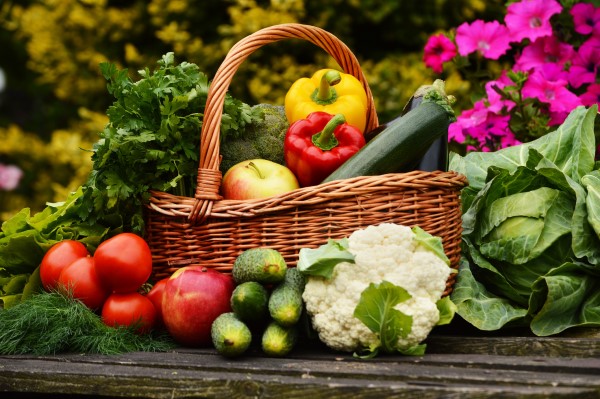 In the vegetable garden, peat helps to moderate extremes in soil dryness and wetness. This is particularly important when growing juicy-fruited plants with tender skins, such as tomatoes, strawberries and blueberries. In fact, these acid-loving plants — and many other fruits and vegetables — benefit from peat’s lower pH. The product’s sterility means it won’t introduce weeds, diseases or pathogens that can quickly ruin a vegetable garden. Peat is suitable for a wide range of vegetables, including tomatoes, peppers, cucumbers, and lettuce.
In the vegetable garden, peat helps to moderate extremes in soil dryness and wetness. This is particularly important when growing juicy-fruited plants with tender skins, such as tomatoes, strawberries and blueberries. In fact, these acid-loving plants — and many other fruits and vegetables — benefit from peat’s lower pH. The product’s sterility means it won’t introduce weeds, diseases or pathogens that can quickly ruin a vegetable garden. Peat is suitable for a wide range of vegetables, including tomatoes, peppers, cucumbers, and lettuce.
Better Lawns and Gardens Using Peat: Contact Us Today
A rich, green lawn is a pleasure to look at and walk on. A healthy, productive garden puts you in control of the foods you put on the table for you and your family. Peat can make it happen. To learn more about the hidden treasures of peat click here. Tim Wallace Soil Mix Supply is here to make that possible. Contact us at (630) 759-1080 to further discuss the ideal soil mix for your lawn – as well as for your garden!
